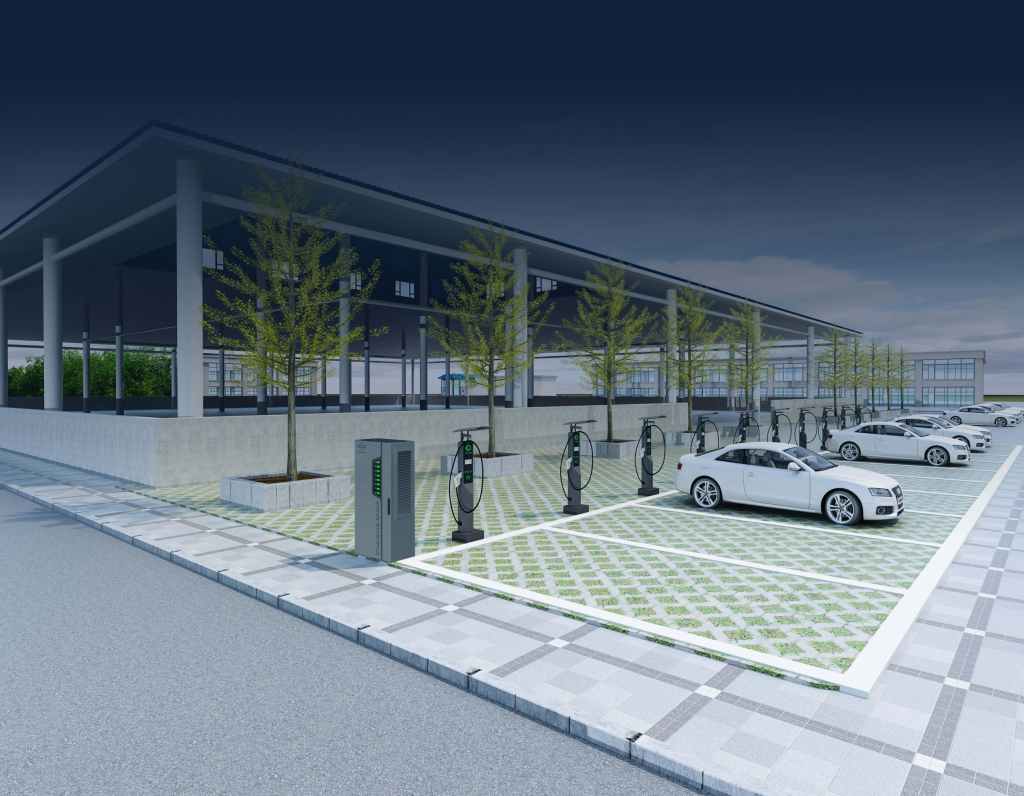With the continuous development of new energy vehicles, charging equipment has also been updated. Dynamic load balancing has become a high-frequency vocabulary in the new energy vehicle charging industry, and the advantages of dynamic load balancing DC EV Charger as a new energy product are self-evident. Let us take you through what dynamic load balancing is and understand its benefits.
How does dynamic load balancing come about?
Since the actual battery life of electric vehicles is less than the officially stated battery life, users will feel anxious when using the vehicle. If the problem of slow charging speed of electric vehicles can be solved, it will greatly alleviate users’ anxiety about using cars.
Traditional fuel vehicles only take about 5 minutes to refuel. If electric vehicles use high-power overcharging, they can also achieve fast charging of 5 to 10 minutes, and problems such as range anxiety and charging anxiety will be overcome one by one.
The problem of fast charging of electric vehicles needs to be solved, and the power requirements for charging piles will become higher and higher. When the voltage, current, and power of charging piles become larger and larger, the form of charging piles will also change from single charging piles to high-power charging. With the development of charging piles, charging piles with the power of 360kW and above will gradually become mainstream. At the same time, this increases the requirements for intelligent power scheduling of charging modules to achieve flexible switching at the single module level.
Intelligent flexible EV chargers can be used in conjunction with DC terminals to solve the different power needs of electric vehicles for charging piles, so the concept of dynamic load balancing came into being.
What is dynamic load balancing?
Dynamic load balancing is a charging method based on an EV Charger. All charging modules of electric vehicle charging stations can be gathered together, and the charging modules can be dynamically allocated according to the actual charging power needs of electric vehicles through the power switching unit. The station-level monitoring system can also be integrated to monitor charging equipment, power distribution equipment, and auxiliary equipment. The equipment is centrally controlled and can charge multiple electric vehicles at the same time.
How to realize dynamic load balancing?
DC charging piles with dynamic load balancing are a new type of power management system that can effectively utilize the conversion relationship between alternating current and direct current. Traditionally, when using alternating current, it needs to be converted into direct current, which often leads to problems such as overcharging of the battery or unstable voltage.
Dynamic load balancing DC charging piles can adopt intelligent charging control according to load demand, monitor the status of the battery, the operation of electric vehicles, and the load of the power grid in real time, and adjust the charging power and time based on this information to achieve adaptive adjustment of the charging process.
In practical applications, flexible distribution DC EV chargers can be divided into two categories: one is a soft-start charging device based on the cycle stability principle, and the other is a fully automatic charging device based on the constant current control principle. Both types of charging systems offer good performance characteristics and flexibility.
What are the advantages of “flexible charging”?
The core advantages of flexible charging stacks are:
- Solve the problem of fixed power of a single charging pile: the power of a single charging pile is fixed and cannot meet the changing needs of higher-power models. With the upgrade of fast-charging batteries and vehicle models, it cannot be “upward compatible.” The dynamic load balancing charging pile is a power cluster that can freely allocate charging power according to customer needs to meet higher power charging needs; in addition, even if electric vehicle fast charging technology iterates in the future, the charging pile can also be upgraded to meet higher power charging needs. , to solve the “upward compatibility” problem.
- Flexible allocation of charging power to improve equipment utilization: The dynamic load balancing EV charger can allocate charging power on demand according to the charging requirements issued by the vehicle BMS, which helps the charging equipment work in the optimal load rate range and improves the equipment utilization efficiency of the charging pile.
- Good economy, significantly reducing investment and maintenance costs: At the same power, dynamic load balancing DC charging pile is cheaper than traditional high-voltage charging, usually only about half of the latter. For investors, flexible charging piles solve the problem of “upward compatibility”. There is no need to worry that the charging piles invested in the early construction will not match the charging needs of subsequent higher-power models, and there is no need to repeatedly increase subsequent investments. Compared with traditional charging technology, dynamic load distribution DC charging piles are easier to maintain and lower in cost.

